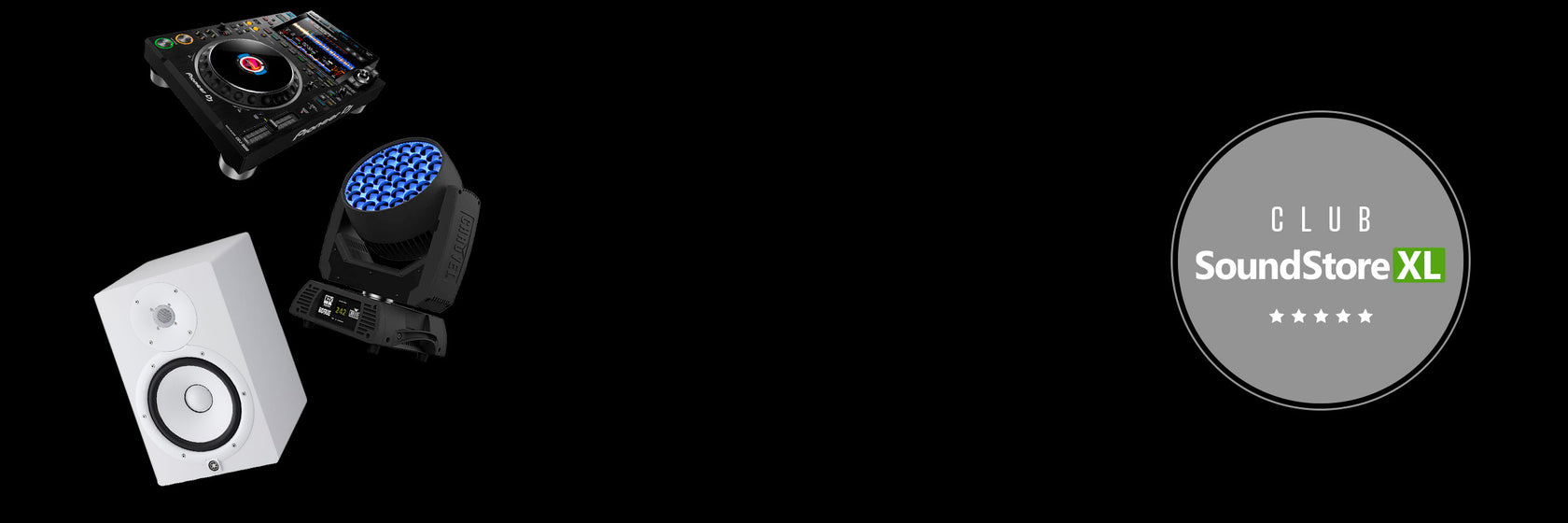- Sparen Sie 4%

- and gain access to unique perks
Distortion pedals are one of the most essential effects for any guitarist, capable of transforming a clean tone into something far more dynamic and expressive. From subtle overdrive to aggressive distortion and fuzz, distortion pedals offer a wide range of creative possibilities. In this article, we’ll explore how different types of distortion pedals work, how to integrate them into your pedalboard, and how to use them for various musical genres. Whether you’re a beginner or a professional, you’ll find valuable information on the best distortion pedals for your electric guitar.
The three main types of distortion effects are overdrive, distortion, and fuzz, each with unique characteristics. Overdrive is a milder form of distortion, often used to emulate the sound of an amp being pushed to its natural limit. Overdrive pedals are perfect for blues and rock, where a warm and dynamic sound is desired. On the other hand, distortion offers a more aggressive, compressed tone, making it ideal for hard rock and metal, where a saturated, powerful sound is necessary. Finally, there’s fuzz, which takes distortion to the extreme, creating a sound that’s almost synth-like. Fuzz is commonly used in psychedelic rock and experimental music.
By understanding the differences between these three types of distortion pedals, you can choose the one that best fits your music style. Many guitarists also combine multiple distortion pedals to create complex, unique sounds.
The choice between analogue and digital distortion comes down to personal preference and the sound you want to achieve. Analogue distortion pedals are renowned for their warmth and natural tone. They reproduce distortion in a way that often feels more organic, making them a popular choice for blues and rock guitarists. Analogue pedals also respond dynamically to your playing, allowing for subtle variations in tone based on how hard you play.
Digital distortion pedals, on the other hand, offer more flexibility. A digital distortion pedal often allows you to choose between different types of distortion and adjust parameters with greater precision. Many digital pedals also have the ability to save presets, making them ideal for live performances where you need to switch between sounds quickly. However, some guitarists argue that digital pedals can’t replicate the same warmth and authenticity as their analogue counterparts. Your choice should depend on your playing style and the demands of your sound.
An important aspect of getting the perfect sound from your distortion pedal is learning how to adjust the gain, tone, and level settings. Gain controls how much distortion is applied to the signal. If you want a subtle overdrive, keep the gain low, while higher gain settings will give you a heavy distortion. The tone control adjusts the frequencies that are emphasized in the sound. A brighter tone is great for lead playing, while a darker tone is better for rhythm playing in lower registers. The level control adjusts how loud the distorted signal is compared to the clean signal.
By experimenting with these settings, you can fine-tune your sound to suit your style of music. For beginners, it may take time to find the perfect balance, but with experience, you’ll learn how small adjustments can make a big difference in your tone.
Different musical genres require different types of distortion. Distortion pedals for blues are often milder and more dynamic, as guitarists in this genre typically seek a warm, tube-like tone. Overdrive pedals like the Tube Screamer are popular choices because they enhance the guitar’s tone without overdoing it. For rock and hard rock, distortion pedals with more gain and a fuller sound are essential. Pedals like the Boss DS-1 are staples in these genres, providing the rich, saturated tones needed for powerful riffs.
For metal, distortion pedals are designed to deliver maximum gain and sustain. A strong distortion pedal is essential to achieve the aggression and clarity needed, especially with fast riffs and down-tuned guitars. Pedals like the Metal Zone or analogue high-gain pedals are popular among metal guitarists, as they offer the sharp, saturated sound required for the genre.
One of the most exciting possibilities with distortion pedals is combining them with other effects to create unique sounds. For example, you can add reverb or delay to give your distorted tone more depth and space. This is especially useful for lead playing, where you want your sound to fill the mix more. Modulation effects like chorus or phaser can also be used to create movement in your distorted tone.
If you experiment with multiple distortion pedals, you can also create complex layers of distortion and fuzz. Some guitarists even use an overdrive as a boost in front of a distortion pedal to get even more gain and punch. No matter how you choose to combine your distortion pedals with other effects, the possibilities are almost endless, allowing you to create a sound that’s entirely unique to you.
Distortion pedals are one of the most versatile types of effects available and can take your guitar playing to new heights. Whether you’re playing blues, rock, or metal, there’s a distortion pedal that’s perfect for your style. With the right settings and combinations of pedals, you can shape your tone exactly as you want it. Take the time to explore the different types of distortion pedals and find the one that best matches your needs and musical goals.
Kundenservice
Unsere Produktexperten stehen Ihnen gerne zur Verfügung.
Schnelle Lieferung
In ganz Europa.
100 Tage
Rückgaberecht.